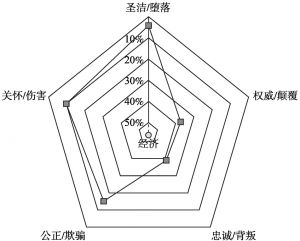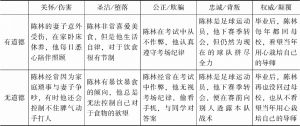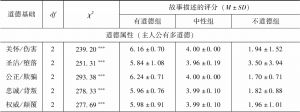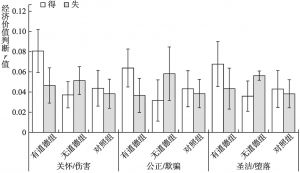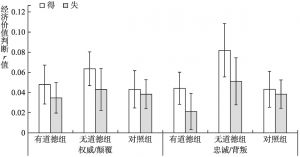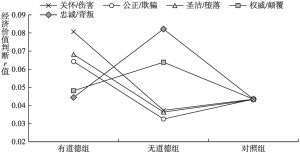论文
道德资本的价值转化效应
摘要
前人研究证实人们对物品的价值判断受物品所有者的法律属性、文化身份、权力地位的影响。本研究通过2个实验,验证物品所有者的道德属性对物品价值判断的影响。实验1爬取互联网媒体大数据探索海特的五个道德基础与经济问题的接近程度。结果发现五个道德基础可分为两大类:在经济问题上处于中心位置的关怀/伤害、公正/欺骗和圣洁/堕落;在经济问题上处于远端的忠诚/背叛和权威/颠覆。实验2以得失情境(损失 vs获得)和道德属性(有道德组 vs无道德组 vs对照组)为自变量,以物品估价为因变量,采用情境实验分别验证主人公在五个道德基础上的道德属性对其所有物经济价值判断的影响。结果发现,关怀/伤害、圣洁/堕落、公正/欺骗对经济价值判断具有正向影响,证实这三个与经济较远的道德基础能够产生道德资本的价值转化效应。
检索正文关键字
论文目录
- 一 引言
-
二 研究1:道德基础在经济问题上的位置
- (一)研究方法
- (二)数据分析
- (三)讨论
-
三 研究2:道德资本的价值效应
- (一)工具
- (二)预实验
- (三)研究设计
- (四)研究对象
- (五)统计方法
- 四 研究结果
-
五 结论与结果
- (一)研究意义
- (二)研究局限与展望
- 附录A
相关文献
宽容对小学生外化问题行为的影响:友谊质量、敌意归因的中介作用
程序公平性和结果有利性对儿童程序正义判断、结果满意度与权威接纳意愿的影响
查看更多>>>


